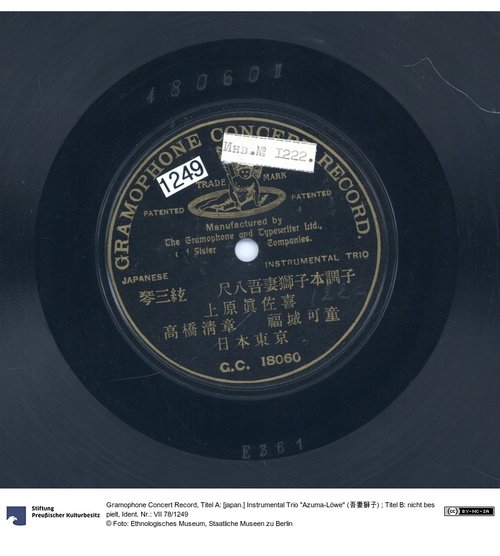Besetzung: Jiuta-Shamisen 地唄三味線 ( Shamisen mit mittelgroßem Hals für die Gattung der Kunstlieder jiuta 地歌); Wölbbrettzither Koto 箏 (auf dem Label mit dem anderen Kanji 琴 beschrieben) und Bambusflöte Shakuhachi 尺八
Stück: "Azuma jishi" 吾妻獅子(auch 東獅子 geschrieben) in Grundstimmung honchôshi 本調子 (ein Jiuta-Stück, dass um 1797 von Kôtô Minezaki 峰崎勾当 komponiert wurde. Dieser Ausschnitt ist aus dem instrumentalen Mittelteil tegoto 手事. Ursprünglich ein aus den Erzählungen " Ise-Monogatari" 伊勢物語 entlehnter Löwentanz. siehe URL: https://kotobank.jp/word/東獅子(吾妻獅子)-1142832, Stand: 14.12.2016, 16:34 Uhr)
Interpreten: Uehara, Masaki 上原眞佐喜, Takahashi, Seishô 高橋清章, Fukushiro, Kadô 福城可童
en

